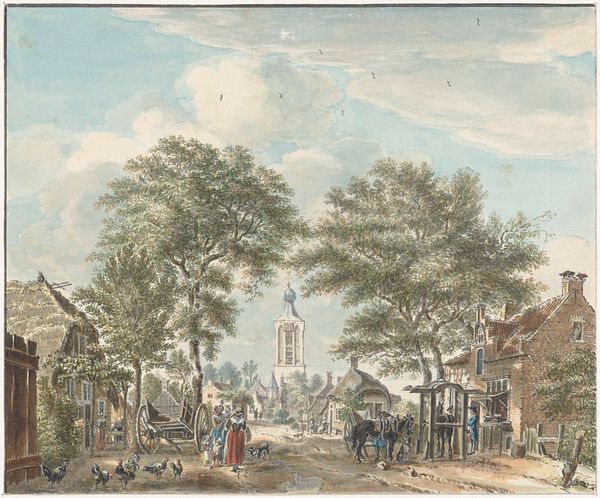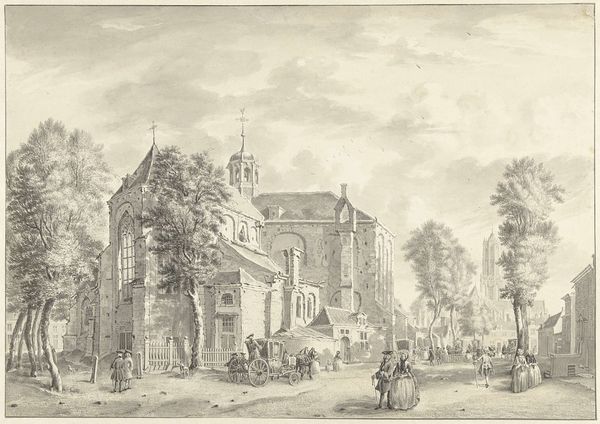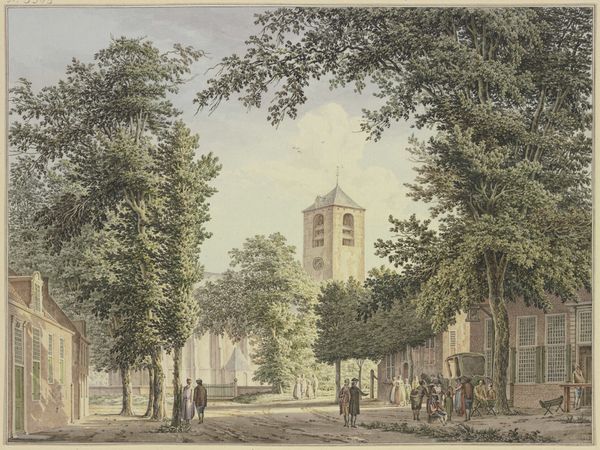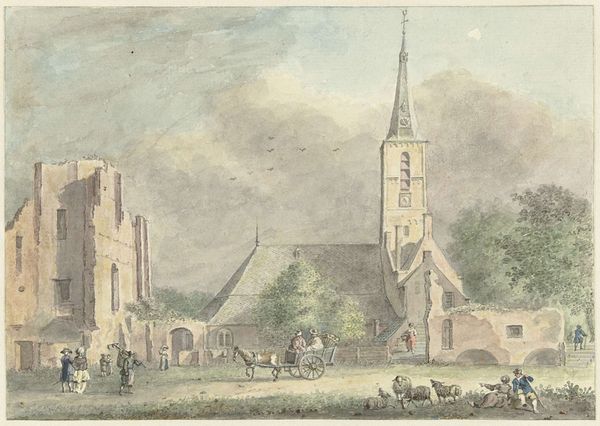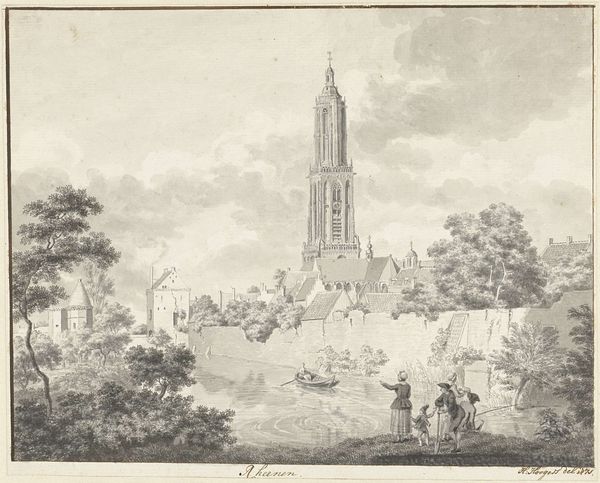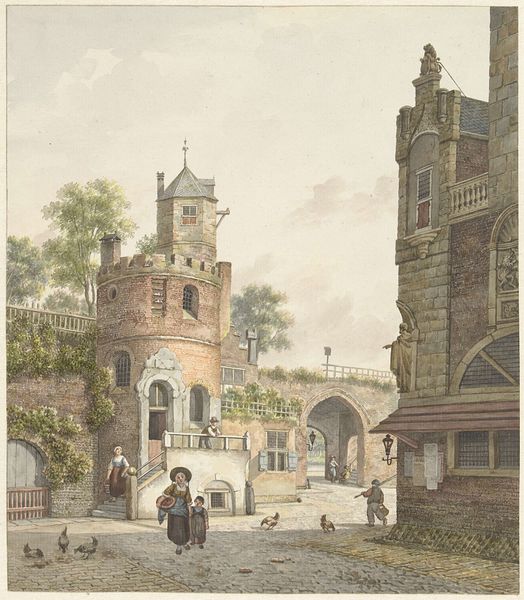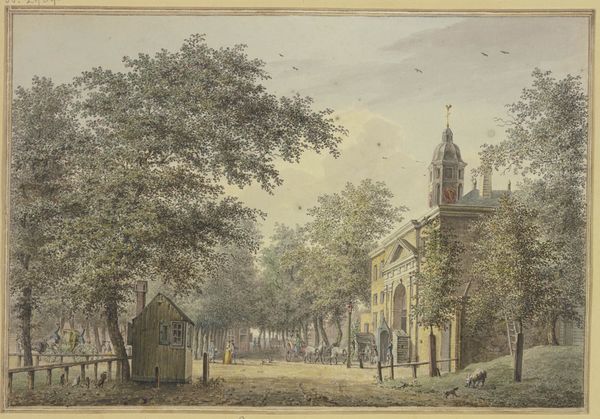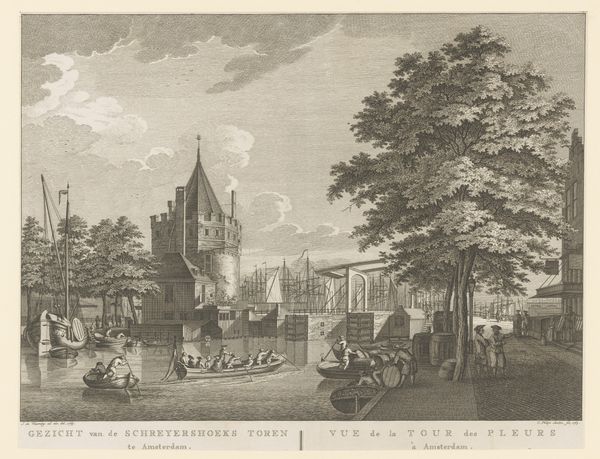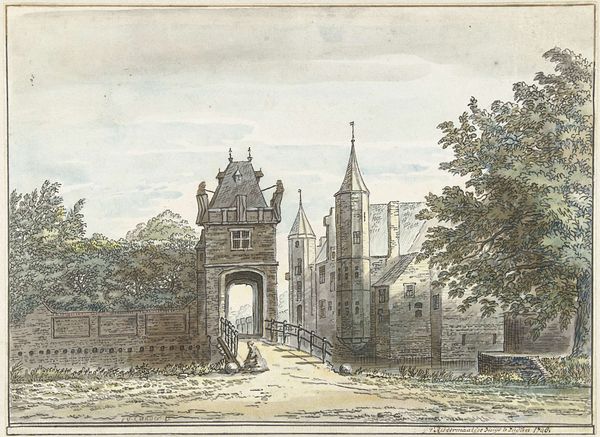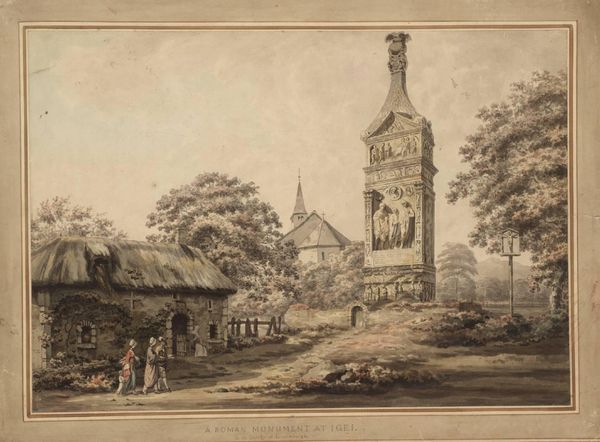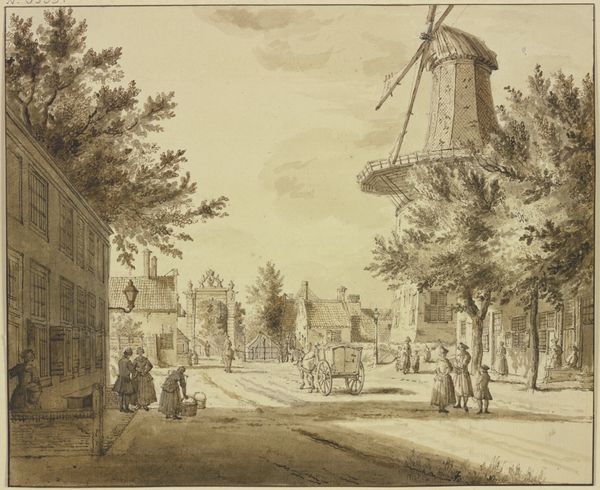
Dimensions: height 163 mm, width 198 mm
Copyright: Rijks Museum: Open Domain
Editor: This watercolor and ink drawing, titled "Vrolijke partij in het dorp Houten" or "Merry Company in the Village of Houten", is by Jan de Beijer and dates from sometime between 1713 and 1780. It captures a scene that feels both idyllic and meticulously constructed. I am intrigued by the social dynamic being captured. How do you interpret this work in terms of its representation of Dutch society at that time? Curator: De Beijer’s work, though seemingly a simple cityscape, offers a glimpse into the power structures embedded within 18th-century Dutch society. We should ask ourselves who is included and who is excluded. Do we see, for instance, an accurate portrayal of class divisions? How does the architecture—the church tower looming over the scene, the grand house contrasted with the more modest structures—reinforce or challenge those divisions? Editor: That's a really interesting way to look at it! I hadn't considered the church's positioning in that way. Is the "Merry Company" then meant to suggest something more critical about the distribution of wealth and leisure? Curator: Perhaps. De Beijer presents us with a curated snapshot. Consider the title: is it genuinely "merry," or does it mask underlying tensions and inequalities? Are we meant to admire the scene, or question the conditions that make such leisure possible for some, while others remain unseen, working on farms and elsewhere? Whose narrative is truly being represented here? Editor: So, instead of simply appreciating the artistic skill and the quaintness of the scene, we should consider its implications about the people, or even the silences surrounding the people of the era, that the piece presents? Curator: Exactly. And how the gaze of the artist—presumably belonging to a certain class—shapes that representation. Engaging with these silences is key to understanding the art’s role in reinforcing, or potentially subverting, societal norms of the time. Editor: This really shifts how I view historical artworks. I'll definitely remember to look for those social commentaries in the future. Thanks! Curator: My pleasure. Remember, art is rarely neutral. It's always speaking from a specific context, consciously or unconsciously.
Comments
No comments
Be the first to comment and join the conversation on the ultimate creative platform.
